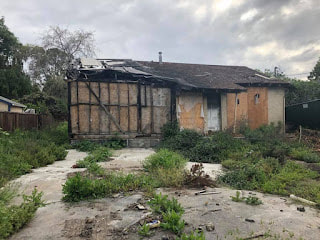|
A single unexpected expense and a missed mortgage payment can set off a string of events that snowball into a complicated problem. When you miss a payment, you have a short grace period, usually 10-15 days, during which you can pay without penalty. After that, a late fee will be assessed by the lender, which is often 5% of the amount overdue. It doesn’t take long for that one unaffordable mortgage payment to become even more out of reach, putting foreclosure proceedings into action.
Foreclosure involves many complex steps according to a timeline specified by Colorado law. When there is an opportunity for you to do something to avoid a Colorado foreclosure, do it as soon as possible and follow the instructions you are given to the letter. Even small errors can potentially derail you from keeping your home. Let’s take a look at how the foreclosure process unfolds and how you can respond at each step This timeline is a simplified summary of the basic procedures under the foreclosure statute and does not attempt to cover all aspects. This is a complex statute and an attorney should be consulted before taking any steps, or making any decisions, regarding the foreclosure process. Note that, unless otherwise stated, all references to “days” are “calendar days”. When calculating dates, if the specified date is a legal holiday, or a Saturday or Sunday, then the date is extended to next day that is not a legal holiday, Saturday or Sunday. Pre-foreclosure
Lender’s procedures on commencement of the foreclosure saleThe lender’s attorney will commence the sale by filing the following with the public trustee of the county where the property is:
Public trustee procedures on commencement of the foreclosure saleOn receipt of the request for sale, the public trustee must:
Right to Cure:
Rule 120 Hearing (Colorado Rules of Civil Procedure Rule 120):
Redemption for junior lienors:
Vesting of title:
Confirmation Deed:
0 Comments
It’s a crazy market out there. Buyers are doing anything they can to secure a home, but inventory is low because potential sellers don’t want to be buyers in this market. And when a seller does list their home, their biggest fear is they won’t be able to find a new home in the time they must be out of their old one. A post-closing occupancy agreement might just work for your buyer who’s looking to make a stand-out offer, and your seller who’s worried about the timeline.
What is a post-closing occupancy agreement? A post-closing occupancy agreement is when a seller retains occupancy of the property for up to 60 days after closing occurs, the tactic isn’t often used, but in this market, brokers consider it an ace in the hole, if navigated correctly. Evaluate Not all buyers are good candidates for the post-closing occupancy agreement, and it’s important to understand the clients’ current living arrangements. If the buyers are living at an extended-stay hotel, Airbnb, month-to-month apartment, etc., and can lengthen their stay or find another budget-friendly, temporary living arrangement, the post-closing occupancy agreement could be something to consider. Similarly, there’s a note of caution on the seller’s side. Again, not all buyers can accommodate a post-closing occupancy agreement. If you list it as an upfront requirement, you run the risk of decreasing the number of offers you receive. Eight hundred thousand dollars is certainly not an unheard of price in the world of residential real estate, as prices shoot up in hot markets such as New York, the District of Columbia, and the San Francisco Bay area. But what that amount buys in San Jose, a main node of Silicon Valley and its soaring estate prices, drew a second look: a debilitated, burned shell of a home on a small overgrown lot of the type your parents might have warned you to stay away from. The median home value in San Jose is $1,078,300. That's up 23.9% over the past year, and is predicted to rise 8.4% over 2018. The fact that severe fire damage only bumped that average down to $800,000 says a lot about the area's market, where available housing is sparse and residents prioritize proximity to their employment. PS: I just checked about an hour ago, so by the time you read this article know that the house is already under contract. I guess Metro Denver and Centennial prices are not that high after all :( The three largest credit-reporting agencies will begin cleaning up credit reports in July, which could help lift the credit scores of about 12 million consumers. In a survey by the Federal Trade Commission, one in four people say they spot errors in their credit reports, most commonly concerning tax liens and civil judgments. Up to half of tax lien data on a credit report is inaccurate or incomplete. Civil judgments—which means a court has ruled a person owes money—also tend to be ripe with errors or omissions on a credit report, experts say. Consumers can dispute the errors, but the process can be cumbersome. Beginning July 1, Equifax, Experian, and TransUnion will automatically exclude tax lien and civil judgment records from credit reports if they are missing a person’s name, address, Social Security number, or date of birth. Claims that do contain this key information, however, will remain on credit reports. Six percent of Americans with a credit score—or 12 million— likely will see their score go up once the new policy takes effect. About 11 million could see an increase of about 20 points. “A lot of people who have liens or judgments against them already have crummy credit to begin with,” says Keith Gumbinger, vice president at HSH.com, a mortgage resource website. “A 10- or 20-point increase isn’t going to make a difference for a lot of borrowers.” But borrowers who are on the cusp of qualifying for a home loan may stand to benefit the most. For example, Gumbinger says, a would-be buyer with a credit score of 570 who receives a 10-point uptick may be able to qualify for an FHA loan. FHA loans require a minimum 580 credit score.
Whether a home survives a wildfire is not random, nor is it a function of luck, most homes that exhibited attributes promoted by the FireSmart program -- including keeping combustible vegetation away from the house, uncluttered yards and low-flammability roofs and surfaces -- survive fires. It seems clear that the survival of homes was a function of resistance to ignition and not a random event or a matter of luck, Beyond doubt, risk mitigation (FireSmart) guidelines demonstrated their effectiveness in mitigating risk under the harshest of wildfire conditions. Most homes caught on fire as the result of embers from the forest fire landing on their property. "Based on site visits, no instances were observed where home ignition could confidently be attributed to direct contact by flames of the burning forest, and there were very few observations where home ignition was likely due only to radiant heat from the forest. Other studies have shown that embers generated by burning vegetation are common at distances of 300 to 1500ft, can occur at distances as far away as 8 miles and have been recorded as far away as 15 miles. A new FireSmart Home Development Guide was recently released to help homeowners reduce the risk from wildfire. It's produced by FireSmart Canada, a national program designed to reduce wildfire risk that is administered a non-profit coalition called Partners in Protection. The guide recommends that homes in wildfire-prone areas should have a simple roof design, made of non-combustible materials such as clay tile, concrete tile, metal or asphalt shingles. It should have few places where embers or combustible materials can accumulate. Proper maintenance of dormers, skylights and solar panels is recommended. Roof vents should be screened. Soffit vents can pull embers into the home during a fire so they should be screened as well. It says some types of siding, such as vinyl, can melt when exposed to high temperatures, allowing the fire to reach the underlying wall components. Stucco, brick, fiber cement boards/panels and poured concrete offer better fire resistance. Multi-pane, tempered glass windows are recommended. Garage doors should fit properly with no gaps to allow for embers to enter. Maintaining and removing combustible debris (such as lumber, stored vehicles, branches, grass and leaves) and firewood near the exterior walls will reduce a building's vulnerability to ignition during a wildfire, It is important to inspect your vents and openings regularly to ensure the vents are in good repair and remove any combustible debris. Gutters and downspouts should be made of non-combustible material and should have a metal drip edge and a gutter guard. For decks and porches, "the materials used to build the deck, combustible materials you store under your deck and the vegetation around it all contribute to how vulnerable you deck will be," says the guide. It suggests sheathing the underside of the deck or balcony with fire-resistance sheathing. Surround it with materials such as rock mulch, gravel, brick, concrete pavers or stones to prevent vegetative growth. Landscaping is also an important part of making the home more fire resistant. The guide says there should be a 5ft horizontal non-combustible surface perimeter along the outer walls of the house. Within 30ft of the structures, avoid using any woody debris such as mulch. Plants to avoid are cedar, juniper, pine, spruce and tall grass. "A mowed lawn is a fire-resistant lawn. Grasses shorter than 1/2 inch in height are less likely to burn intensely," says the guide. Any place where conditions allow for ignition and spread of fire between structures and vegetation -- the wildland-urban interface -- people are more exposed to the risk of wildfire and that needs to be considered and managed by all stakeholders. Preparing for the threat of a wildfire is a shared responsibility that will only grow in importance as climate change and other factors continue to increase the risk. By Jim Adair |
Categories
All
Archives
September 2022
|








